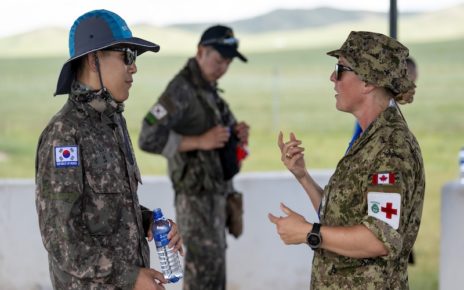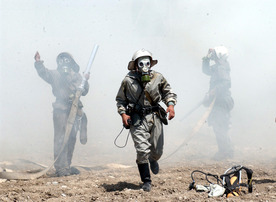Since the election of Donald Trump as President of the United States, political discourse has become even more focused on the threat of Islamic extremism. Those on the right have urged for greater effort to combat this extremism, while those on the left have urged for restraint arguing that additional efforts against Islamic extremism will prove ineffective. In these discussions, however, a larger threat has been overlooked: far-right extremist groups or individuals outside of party politics that commit, or are motivated to commit, violence to further the ends of their far-right ideology.
Excluding the Oklahoma City bombing and the September 11 attacks, between 1990 and 2017 twice as many Americans were victims of far-right terrorist attacks than attacks carried out by Islamic fundamentalists. Norway’s worst act of violence since World War II was committed by white supremacist, Anders Breivik, in 2011 when he shot to death 69 youths at a camp. Two months ago, Canada experienced its worst mass shooting in nearly 30 years when white nationalist, Alexandre Bissonnette, killed six Muslims praying in a mosque.
The ultranationalist and xenophobic tendencies of far-right extremism often lead governments and intelligence agencies to perceive it as a purely domestic phenomenon, ignoring the role of transnational factors such as ideology, global communications, and international black markets. This view is implicit in government documents that treat far-right attacks as lone wolf attacks, which implies that far-right extremist attacks are random acts contingent upon the individual’s psychology and life circumstances. Given the reluctance of many countries to address far-right extremism in the first place, addressing domestic factors is a crucial first step. However, by only concentrating on domestic factors, governments and intelligence agencies will struggle to fully address the widespread nature of the threat that relies on transnational networks.
Although many far-right groups remain concerned about perceived country-specific threats, political scientist Leonard Weinberg in the book, Extreme Right Wing Political Violence and Terrorism, argues that since the end of the Cold War these groups have increasingly moved towards concern over threats to a ‘Western civilization’, encompassing North American and European identities. Changes in ideology are reflected in the transnational tactics of far-right extremists as political scientist Manuela Caiani suggests: “despite opposing a supranational system, many extreme right movements consider it necessary to engage in politics on a transnational level”. Historian Rasmus Fleischer, in his book In the Tracks of Breivik, conceptualizes the far-right as moving from ‘multi-fascism’ towards ‘mono-fascism’. Multi-fascism is focused on maintaining ethnic identities in line with nations, while the mono-fascism that emerged after the September 11 attacks is broadly “pre-occupied with the defense of ‘Western’ values against perceived threats” and “singly obsessed with the imagined frontline between civilizations”. This mono-fascism characterizes the growth of far-right ideology transnationally as exemplified through the ‘Eurabia’ conspiracy theory, which claims Arab and European governments are colluding to ‘Islamize’ Europe; the pan-European sentiments of Anders Breivik’s manifesto, 2083: A European Declaration of Independence; and the motto of white supremacist website Stromfront.com, “White Pride World Wide”.
The internet has perhaps had the greatest impact on the trans-nationalization of far-right extremism. Previously, far-right extremists would have to rely on local and national networks to communicate; however now, like-minded individuals can share content internationally. The leader of white supremacist group, White Revolution, notes “networking can be done between… people who otherwise would never meet or communicate. This exponentially increases and speeds up the dissemination of ideas and activism globally”. Breivik’s online activity, which involved communication with British white nationalist Paul Ray of the anti-Muslim English Defense League and members of the Stop Islamisation of Europe, is testament to the reach of far-right extremists across the world.
The internet has also influenced the ability and ease of securing illegal items to commit acts of violence. Firearms, explosives, and sometimes police uniforms for access to restricted areas could be purchased previously through local networks that required individuals to ‘know the right people’. Now illegal goods are readily available on the ‘dark net’, an area of the web that contains illegal content and markets. The sodium nitrate and sulphur Breivik used to make the bomb that blew up Norwegian government offices was purchased online from markets based in Poland and England, and while his gun was legally purchased in Norway, the ammunition used was illegally bought online from a supplier in the United States.
These transnational factors are crucial to far-right extremism. Thus, to better address and stop the spread of far-right extremism, governments should pay attention to the way far-right extremism operates both domestically and transnationally.
To be continued in part two, discussing how governments and intelligence agencies should address far-right extremism.
Photo: Members of the Alberta-based Neo-Nazi group ‘Aryan Guard’ stage a counter-protest, at an anti-racism rally (2007), by Robert Thivierge via Wikimedia Commons. Licensed under CC BY-SA 3.0.
Disclaimer: Any views or opinions expressed in articles are solely those of the authors and do not necessarily represent the views of the NATO Association of Canada.




